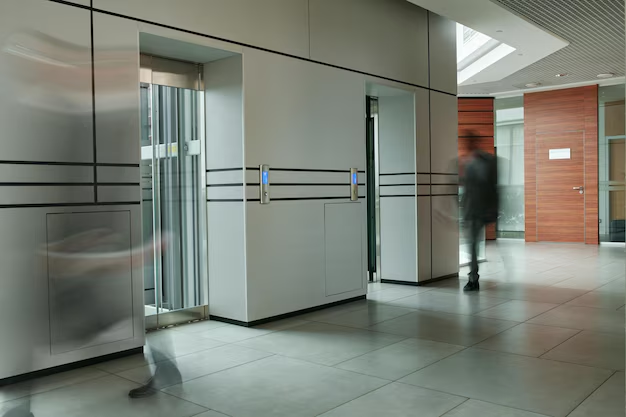How Much Does a Walk-In Refrigerator Really Cost in 2023?
When it comes to crucial investments for a business, a walk-in refrigerator ranks high, particularly if you're in industries like hospitality, food service, or any sector where preserving fresh ingredients is key. The cost can vary widely, and understanding the factors that influence pricing can help you make informed decisions that align with your business needs and budget. Let’s delve into the elements that play a pivotal role in determining how much you're likely to spend on this essential equipment.
Understanding Walk-In Refrigerators
Before exploring costs, it's important to understand what a walk-in refrigerator is and why it might be necessary. Walk-ins are large, fully enclosed storage units that maintain a consistent low temperature to preserve perishable goods. They come in various sizes and configurations and are essential for businesses requiring substantial cold storage capacity.
Benefits of a Walk-In Refrigerator
- Ample Storage Space: Perfect for high-volume goods.
- Efficiency: More energy-efficient than multiple smaller refrigerators.
- Organizational Ease: Easily store and access stock.
Common Usage Areas
- Restaurants and Cafes: For bulk storage of ingredients.
- Grocery Stores: Essential for perishables.
- Laboratories and Healthcare: For storing medical samples that require refrigeration.
Main Factors Influencing Cost
1. Size and Capacity
One of the most significant cost determinants is the size. Walk-ins range from small units to entire rooms. The bigger the unit, the more expensive it generally becomes. Standard sizes might suit smaller businesses, but larger operations might need custom solutions.
2. Customization and Features
Custom features like reinforced flooring, special shelving, or advanced monitoring systems can increase costs. Features providing convenience or enhancing performance will generally add to the overall expense.
- Temperature Controls: Digital and programmable controls might hike the cost.
- Shelving Solutions: Custom or heavy-duty shelving needs can affect pricing.
3. Installation and Location
The complexity of installation can impact costs significantly. Factors like the location within your premises, structural adjustments, or additional electrical and plumbing work required can add to expenses.
4. Energy Efficiency
More energy-efficient models, though possibly more costly upfront, can result in long-term savings. Choosing energy-efficient options may also offer environmental benefits, reducing your carbon footprint and possibly qualifying for certain rebates.
5. Brand and Quality
The brand you choose can be indicative of both price and quality. Established brands may come with a higher price tag but often provide robust warranties and reliable post-purchase support.
6. New vs. Used
Purchasing a used unit can save money initially but might incur extra long-term costs in maintenance and energy bills. New units, however, generally offer the latest technology and efficient operation.
Typical Cost Range
Walk-in refrigerators can have a wide-ranging cost spectrum. Expect anywhere from several thousand dollars for smaller, basic units up to tens of thousands or more for larger, custom installations. This range can fluctuate based on the factors mentioned, so it's crucial to have a clear understanding of your specific requirements.
Short Summary: Key Takeaways 💡
- Small Units: Perfect for limited space; cost-effective.
- Large, Custom Units: Best for high-volume storage; higher initial cost.
- Energy Efficiency: Potential savings over time.
- Installation Costs: Consider complexity and location.
Additional Considerations
Maintenance and Repair Costs
Ongoing upkeep is crucial to ensure longevity and efficiency. Regular maintenance typically involves:
- Cleaning Coils and Fans: Keeps the unit running efficiently.
- Checking Seals and Insulation: Prevents cold air from leaking.
- Professional Inspections: Identify potential issues early.
Investment vs. Return: Is It Worth It?
While the upfront cost might seem daunting, the investment brings benefits beyond just preserving food. Efficient inventory management, waste reduction, and utility savings all contribute to a positive return on investment.
Regulations and Compliance
Ensure any walk-in refrigerator you consider meets local health and safety regulations. Compliance not only avoids penalties but assures you are providing safe and quality products.
Financing Options
For businesses cautious about cash flow, financing options can spread out payments, making high-quality units more accessible without large upfront capital.
Making the Right Choice
Assess Your Needs
Identify your specific needs regarding size, usage frequency, and business expansion plans. A clear understanding of your requirements helps you choose a unit that serves your business today and grows with you tomorrow.
Consult Professionals
Engaging with industry experts can offer insights into the best models, features, and configurations suited to your needs. Professionals can help in drafting specifications that ensure your purchase aligns well with operational needs and budget constraints.
Consider Future Growth
Anticipating future growth when purchasing ensures you select a unit that can handle increased capacity down the line. Investing in a slightly larger unit than currently needed might prove cost-effective in avoiding another major purchase.
Final Insight: Navigating Your Purchase
While the cost of a walk-in refrigerator can vary widely based on several factors, investing in the right unit can yield substantial benefits for your business. An informed, strategic approach to purchasing will ensure that the refrigerator meets your needs not only for now but also as your business evolves. By understanding your options and planning effectively, you can make a purchase that enhances your operations and contributes positively to your bottom line.
